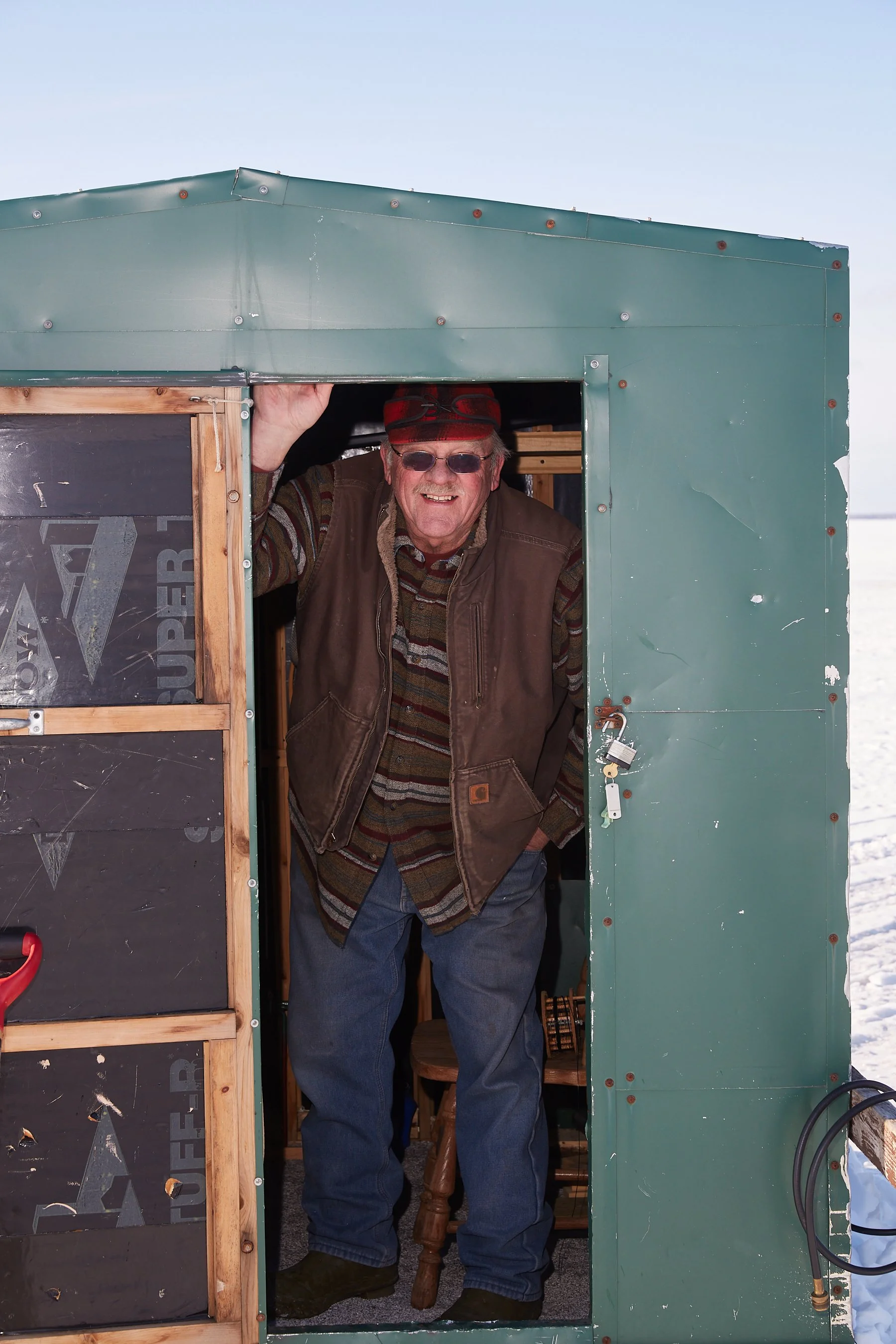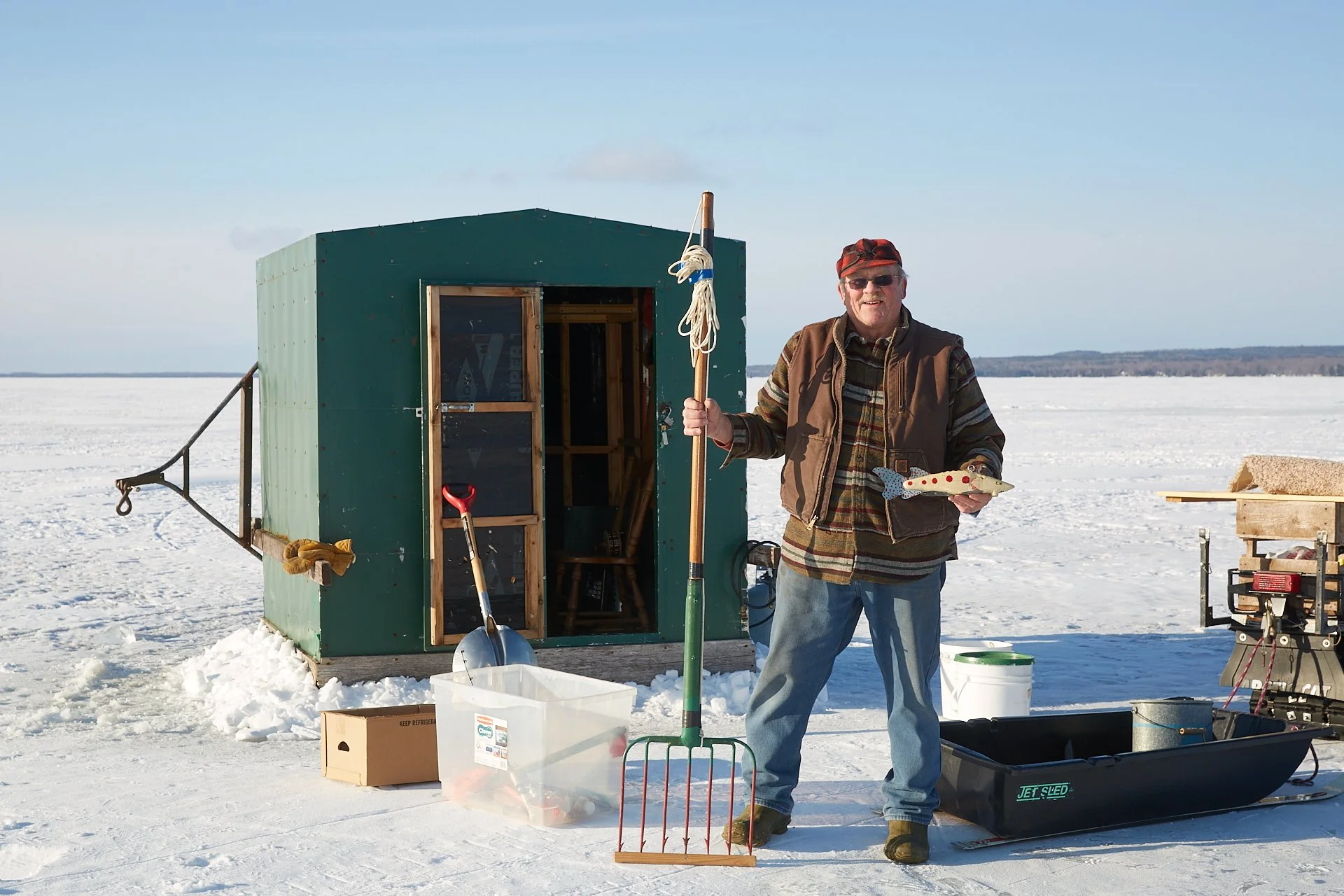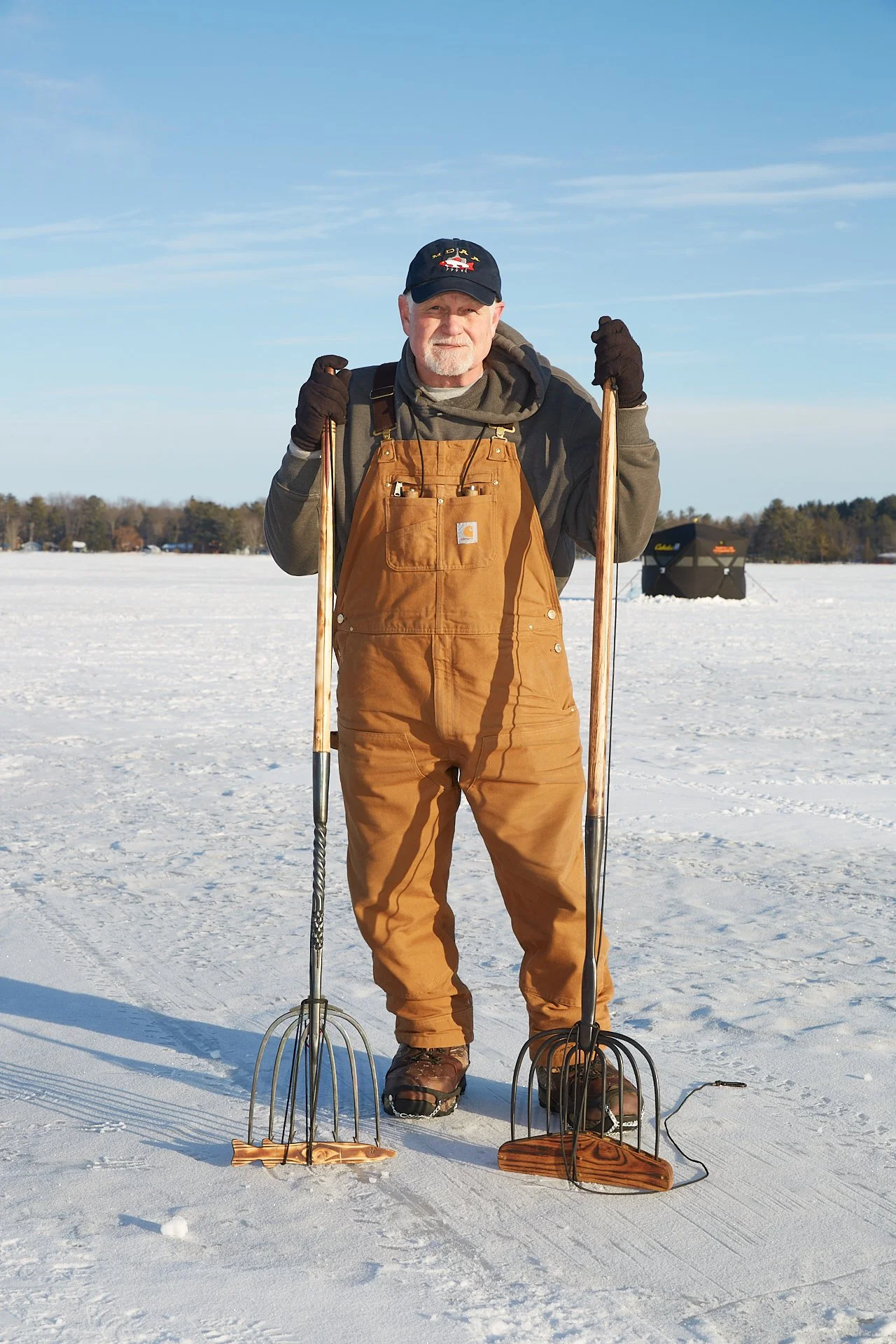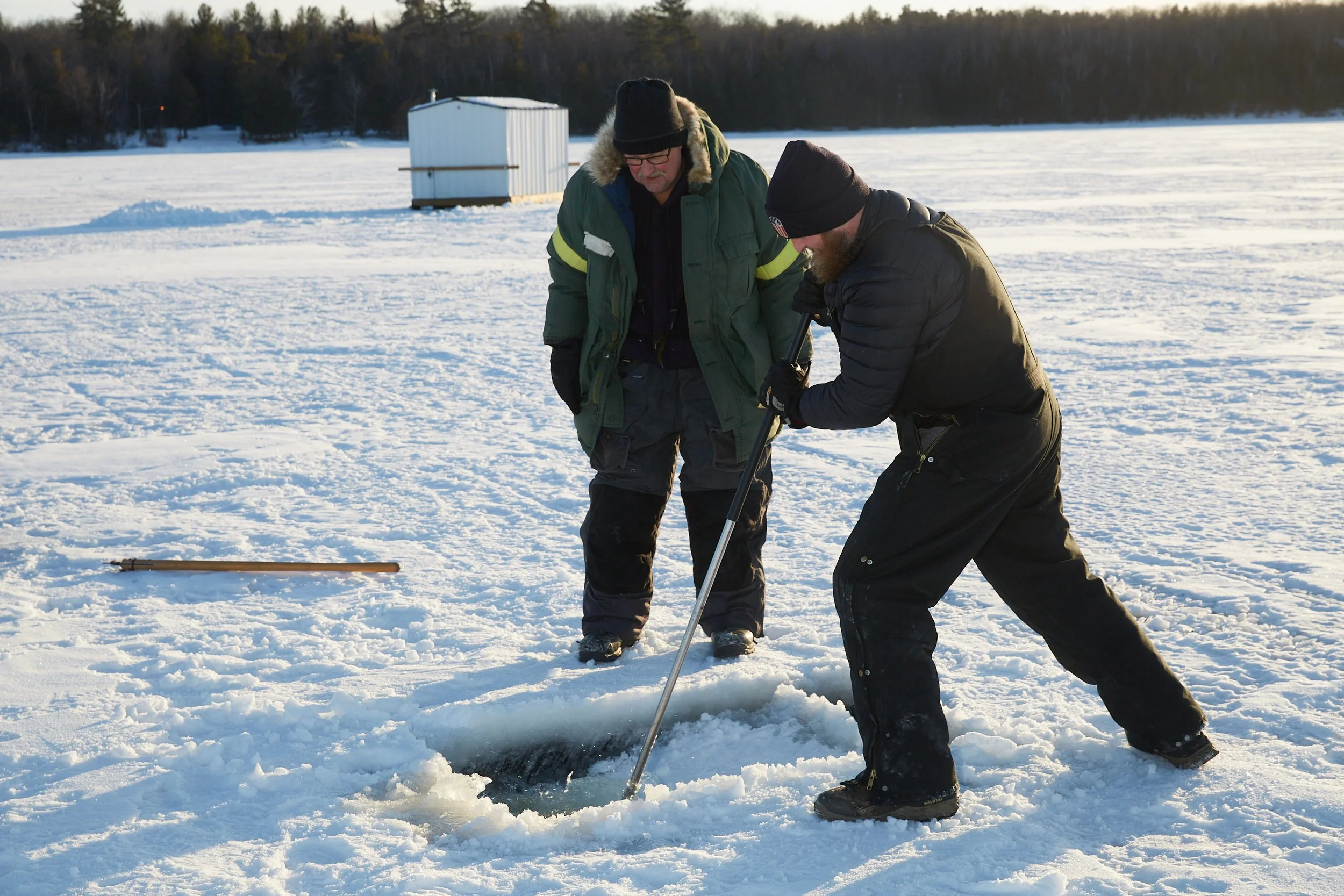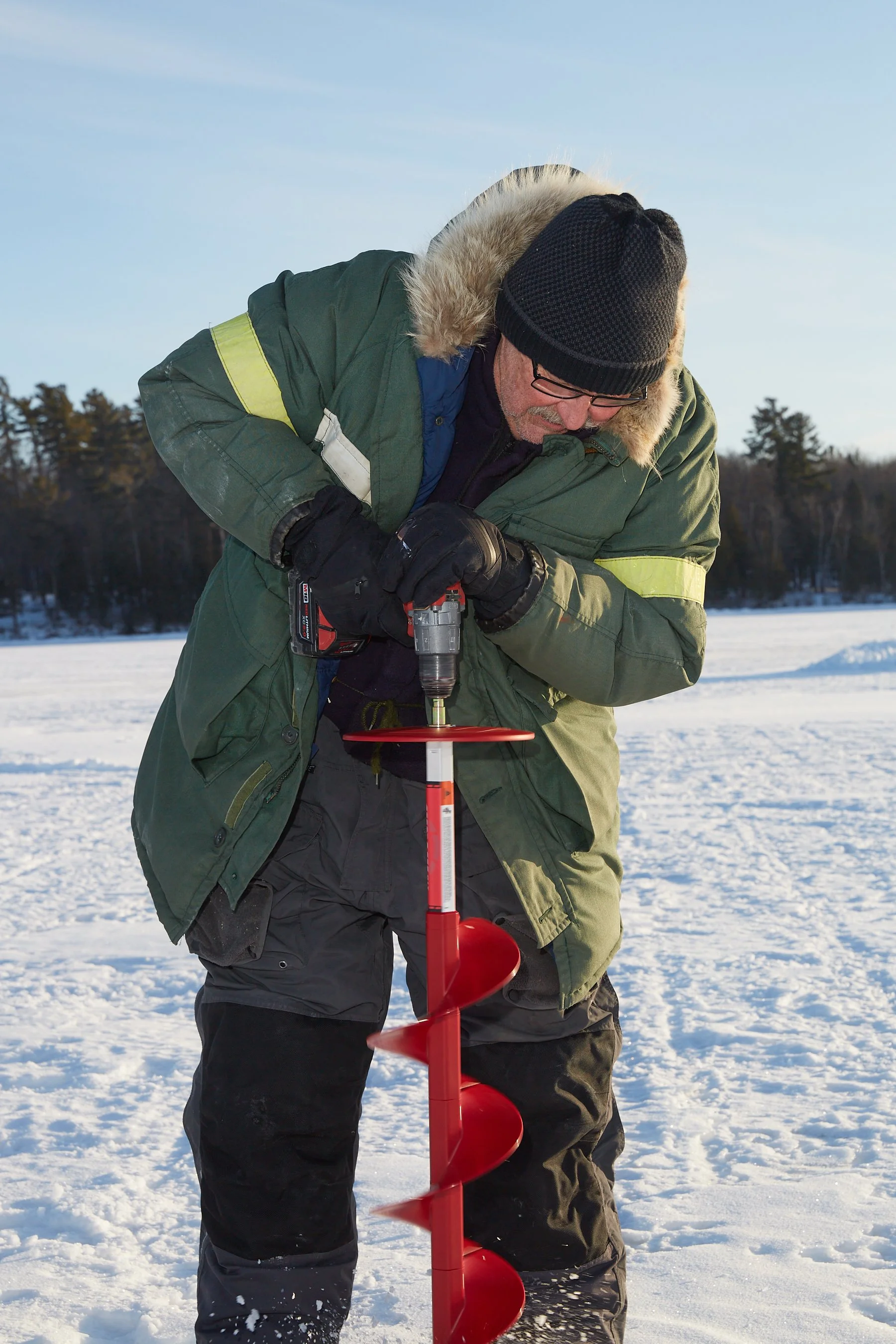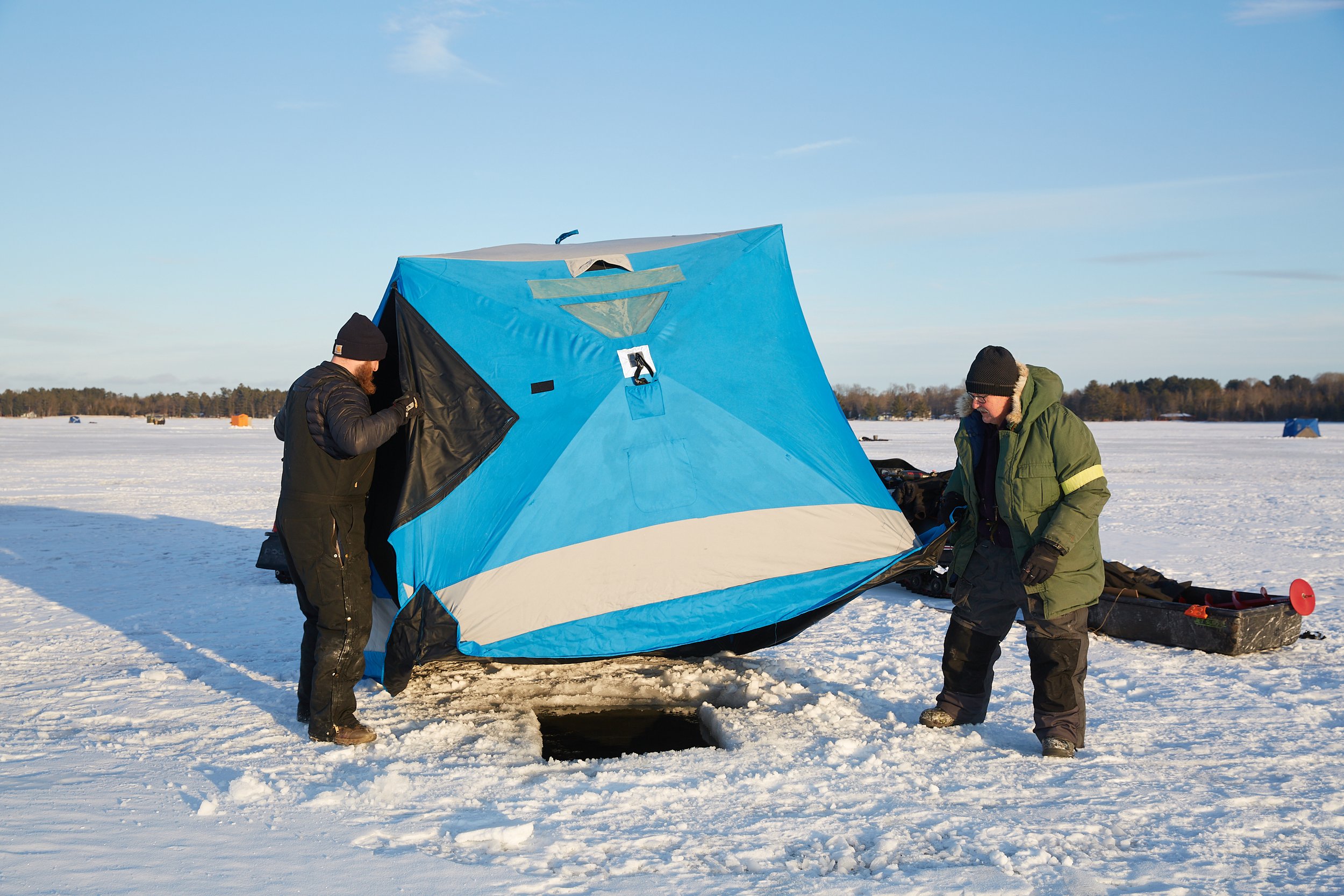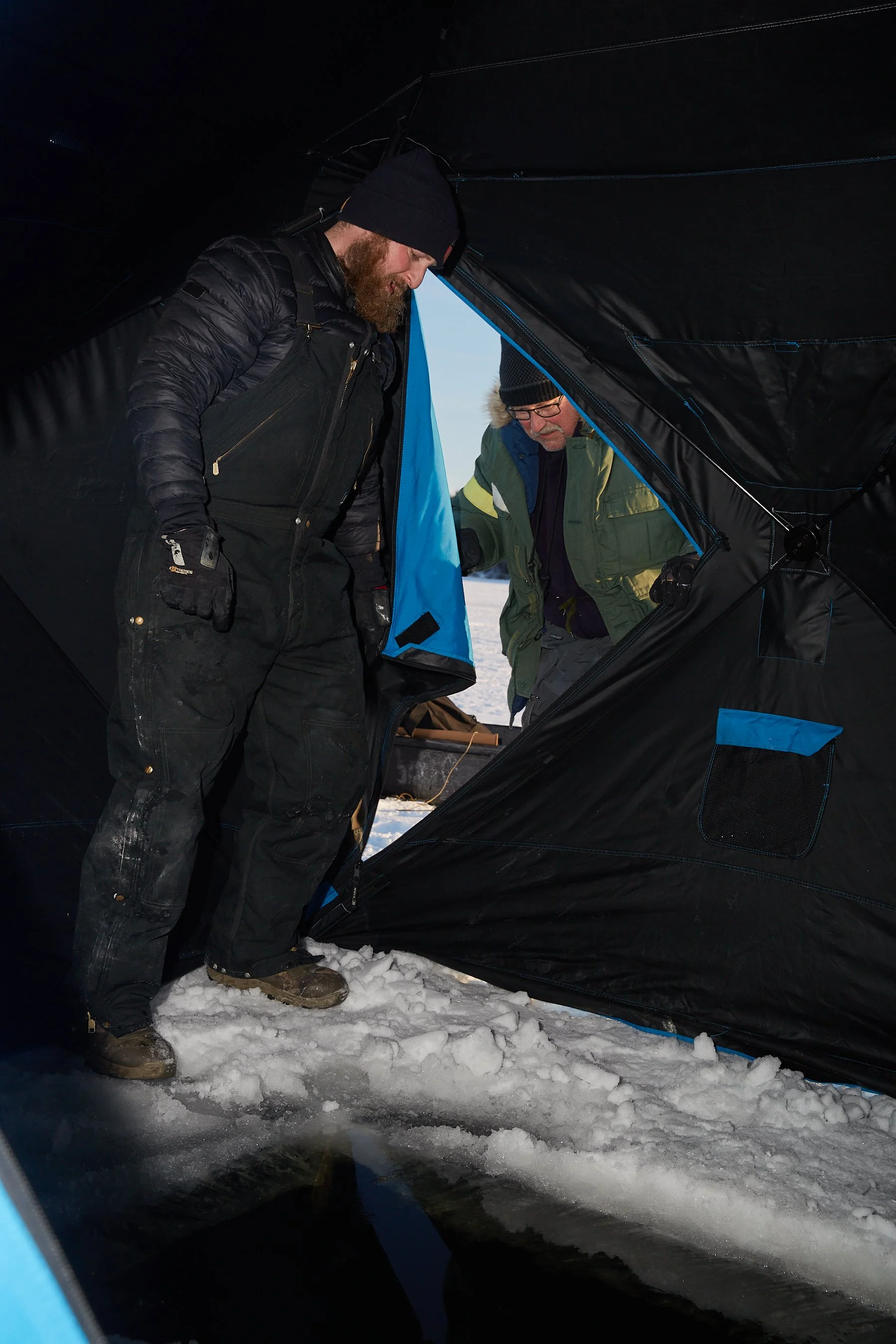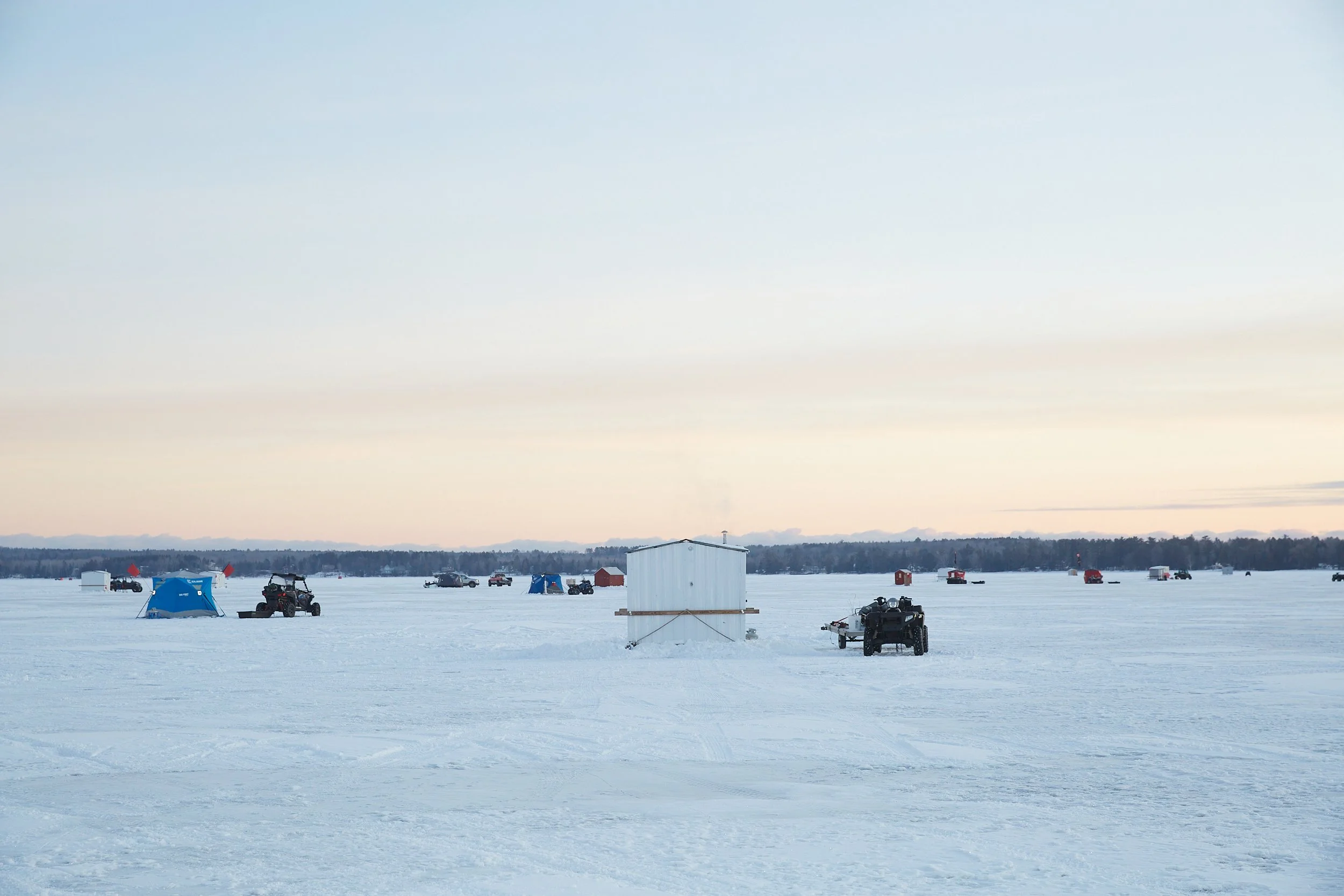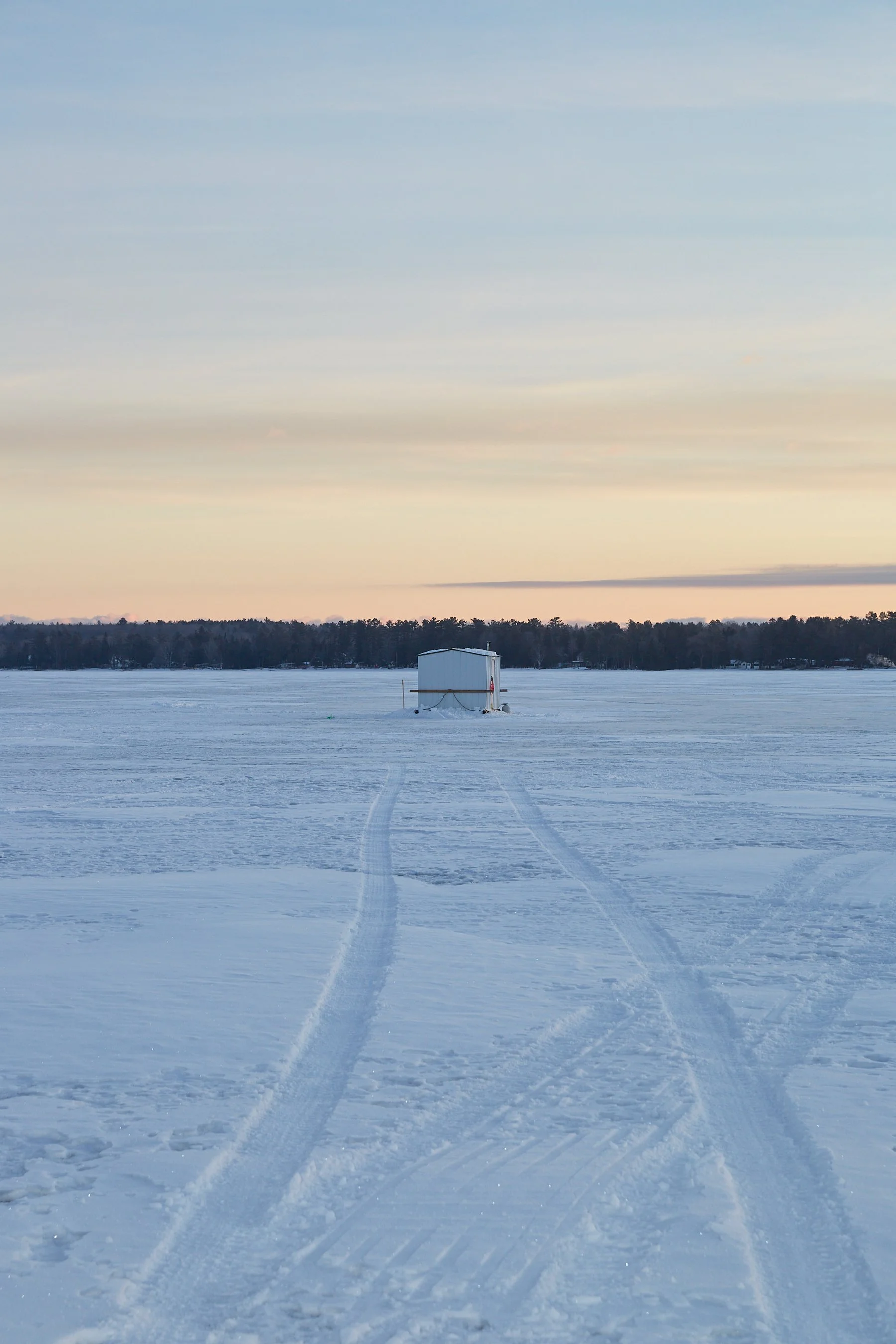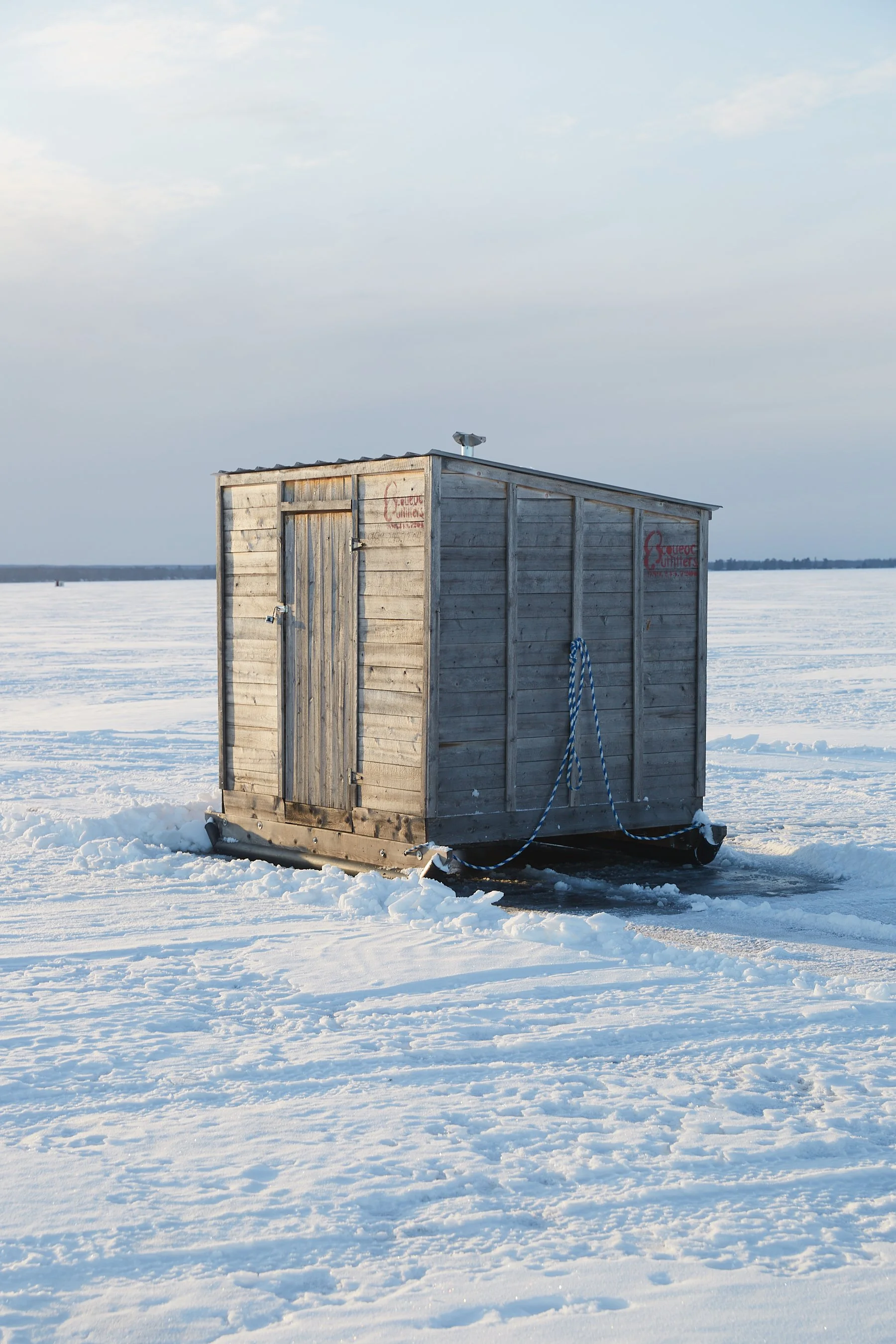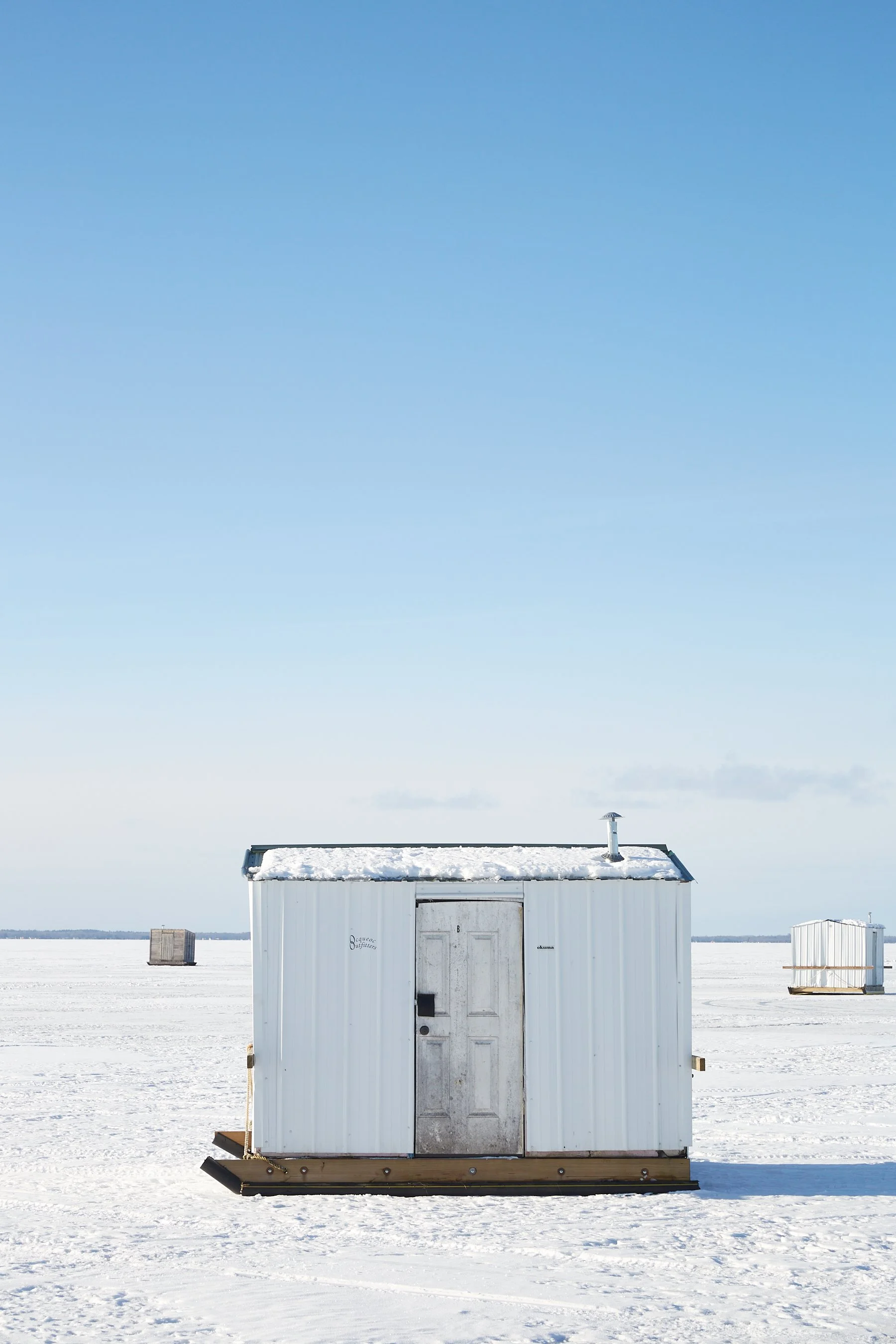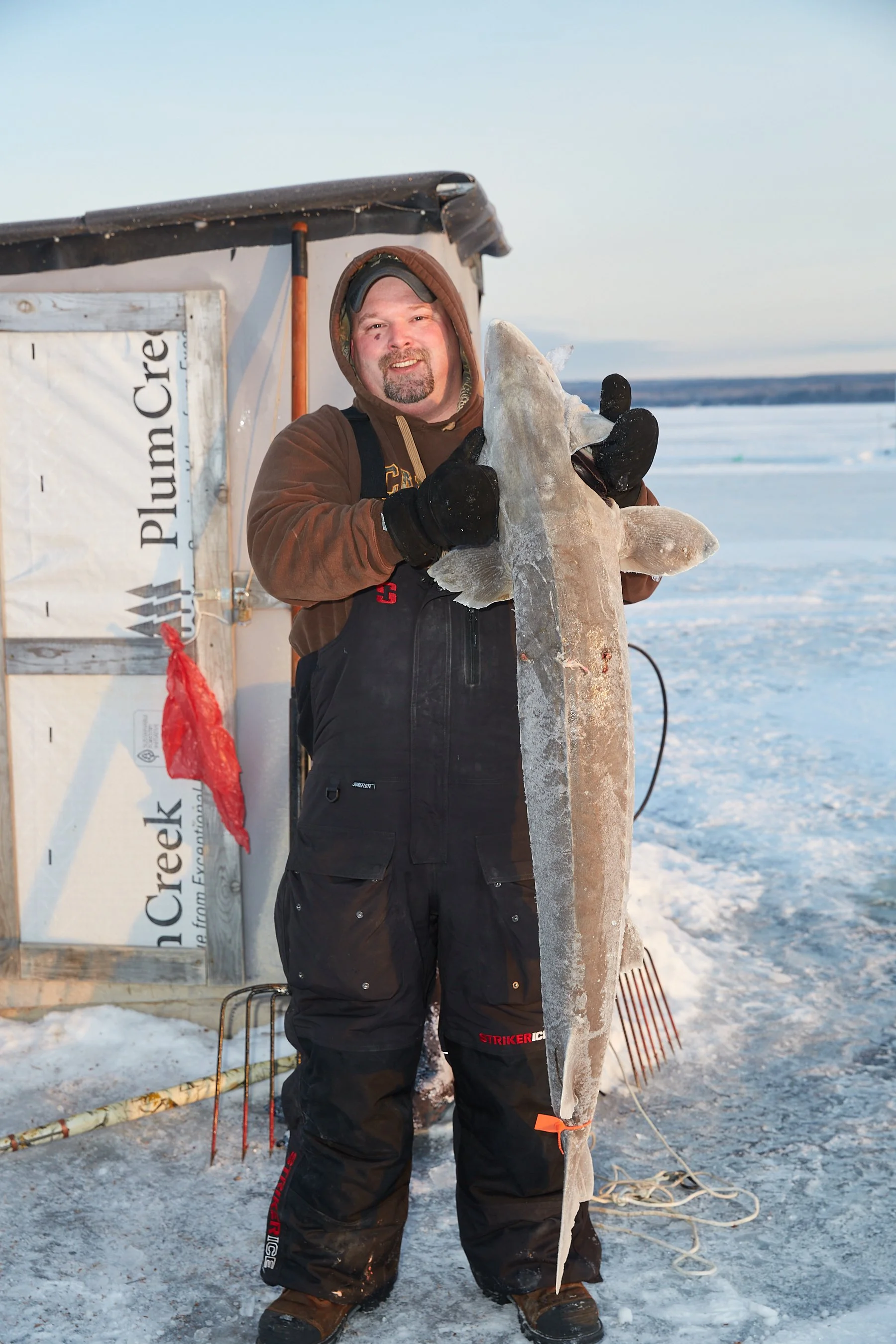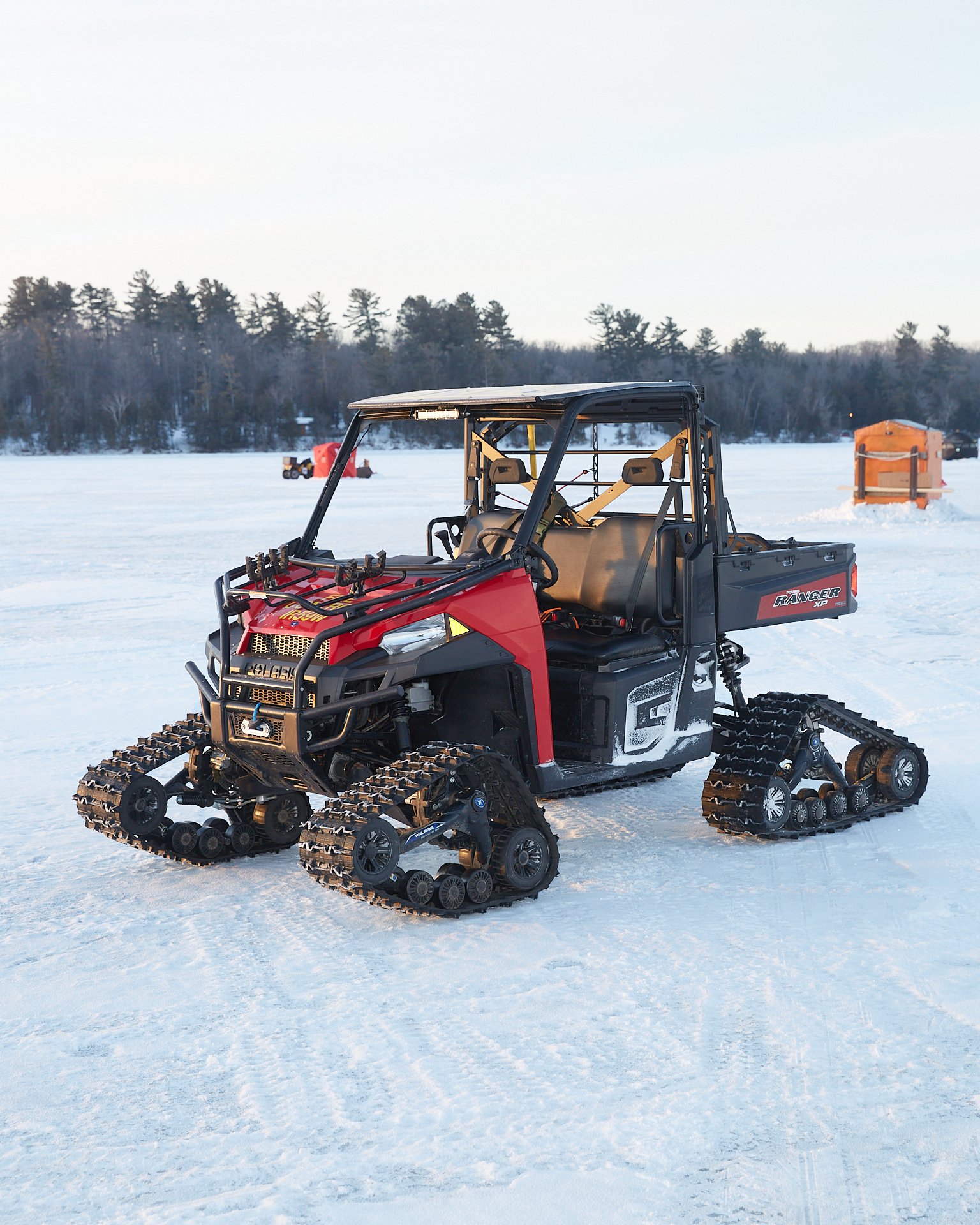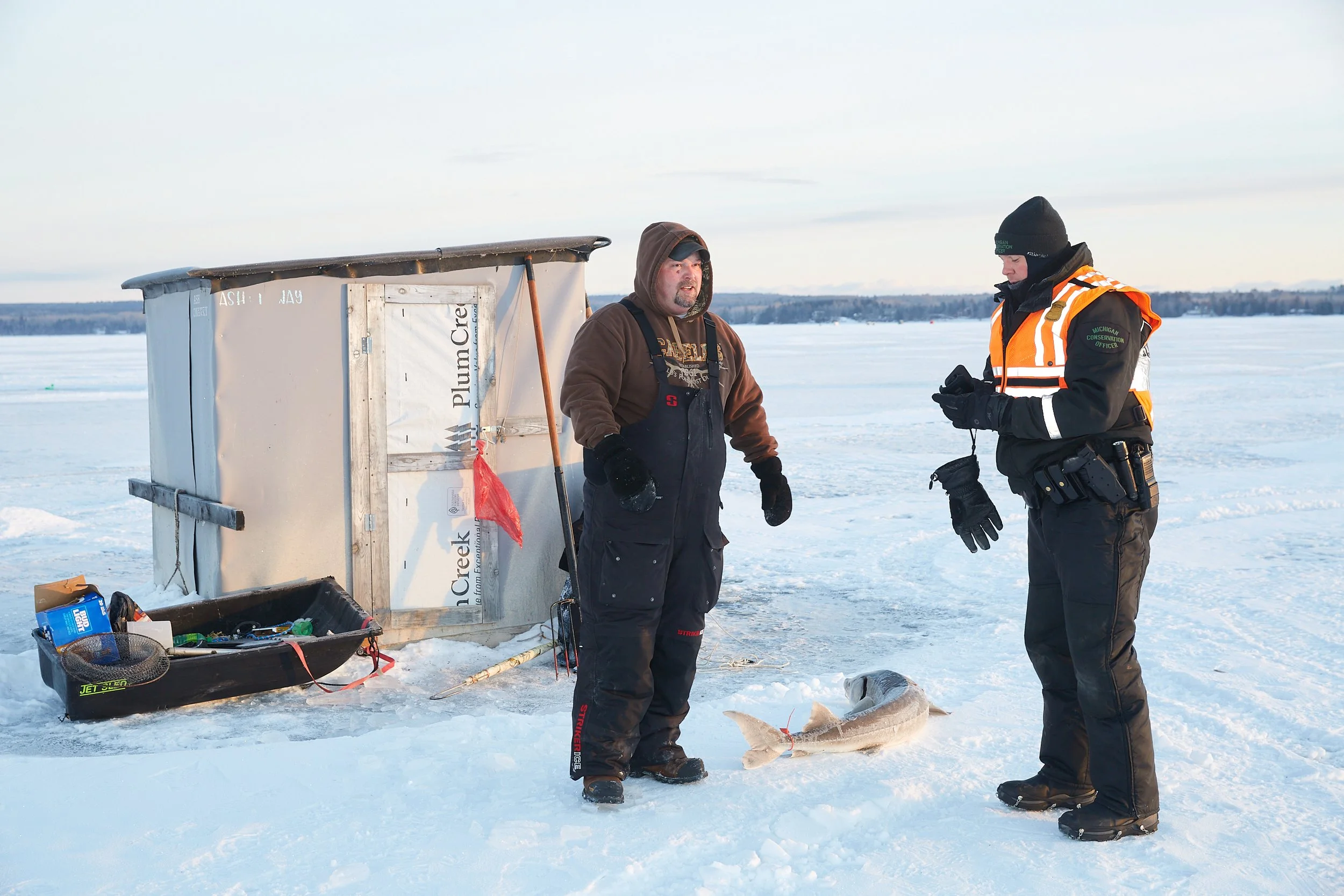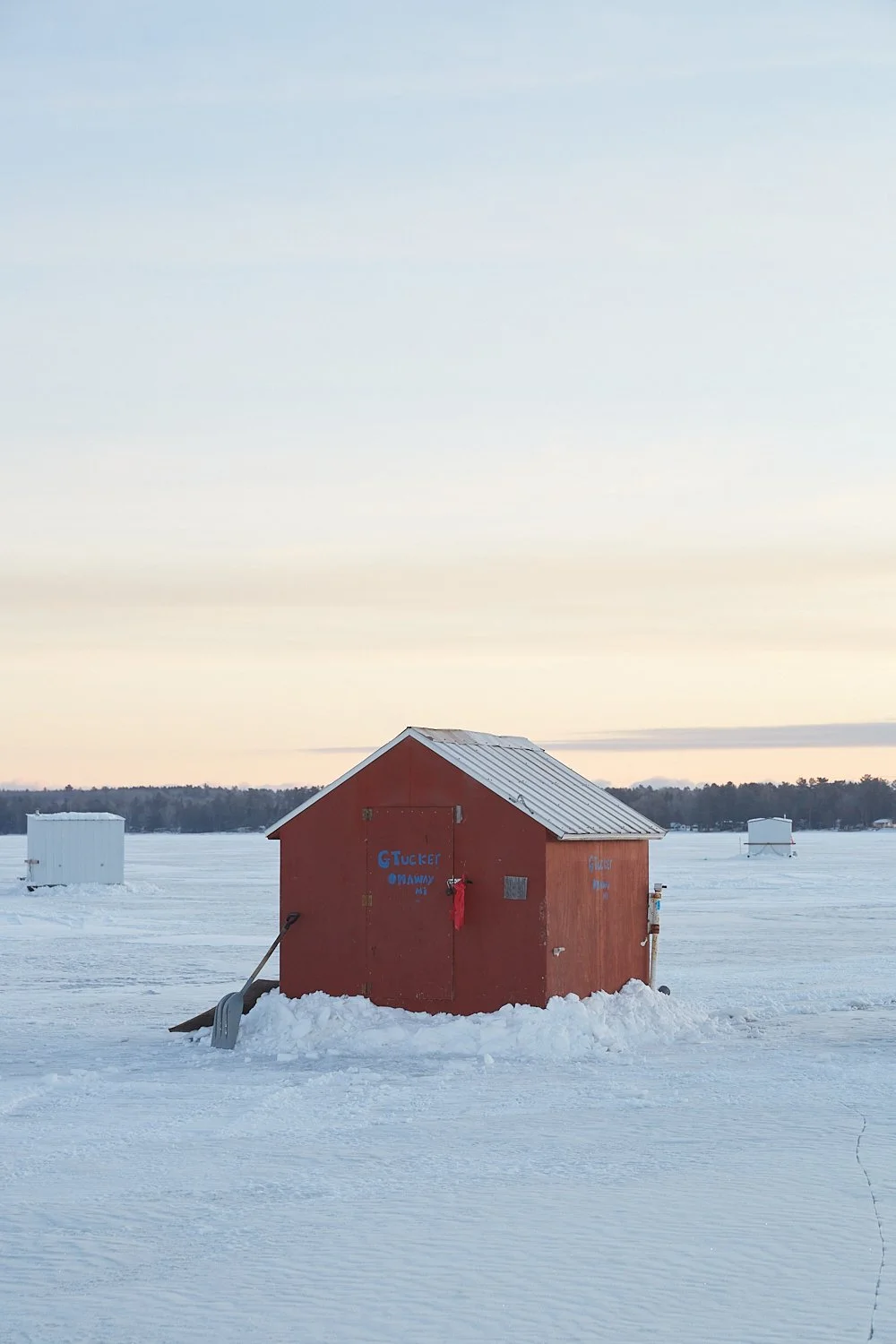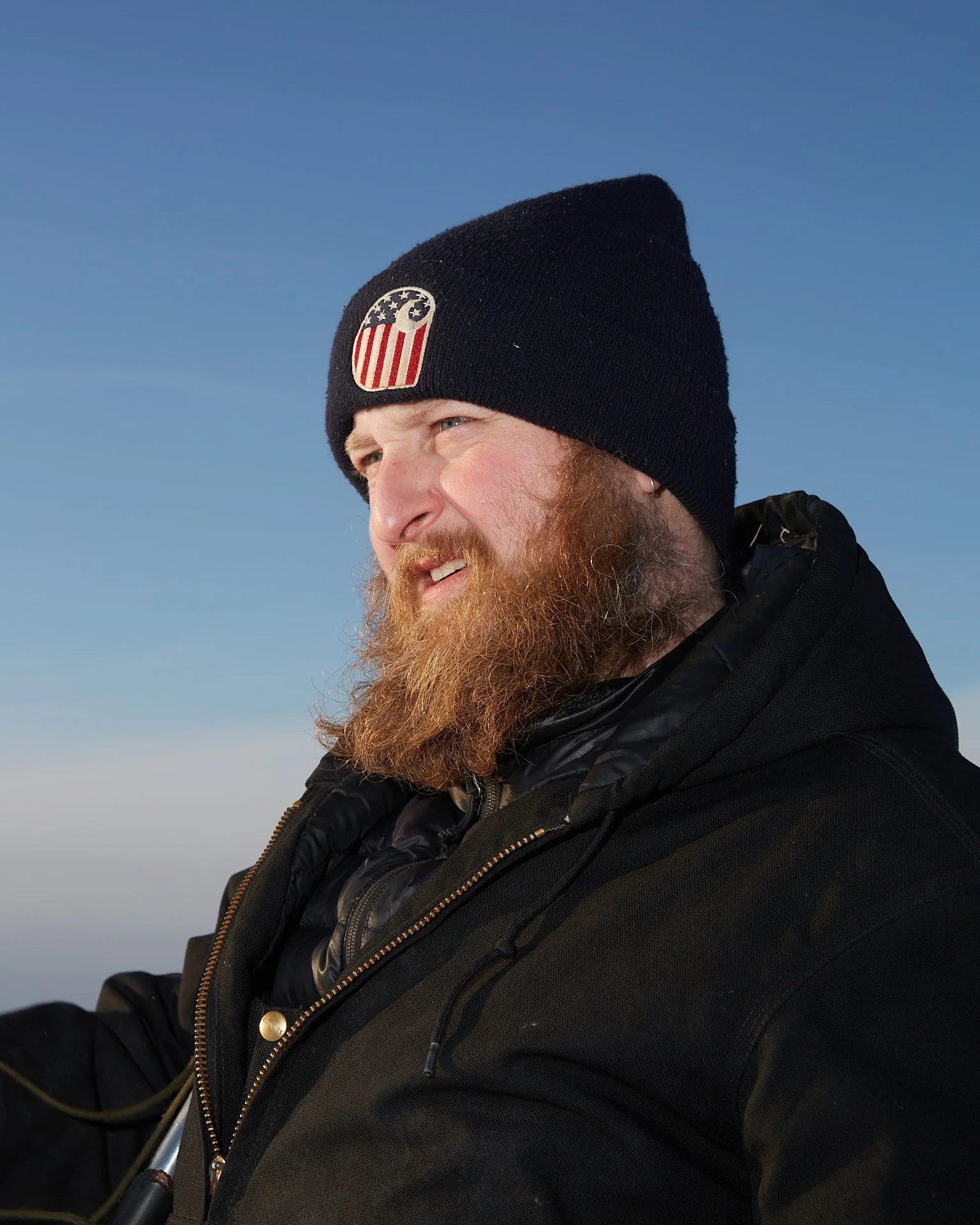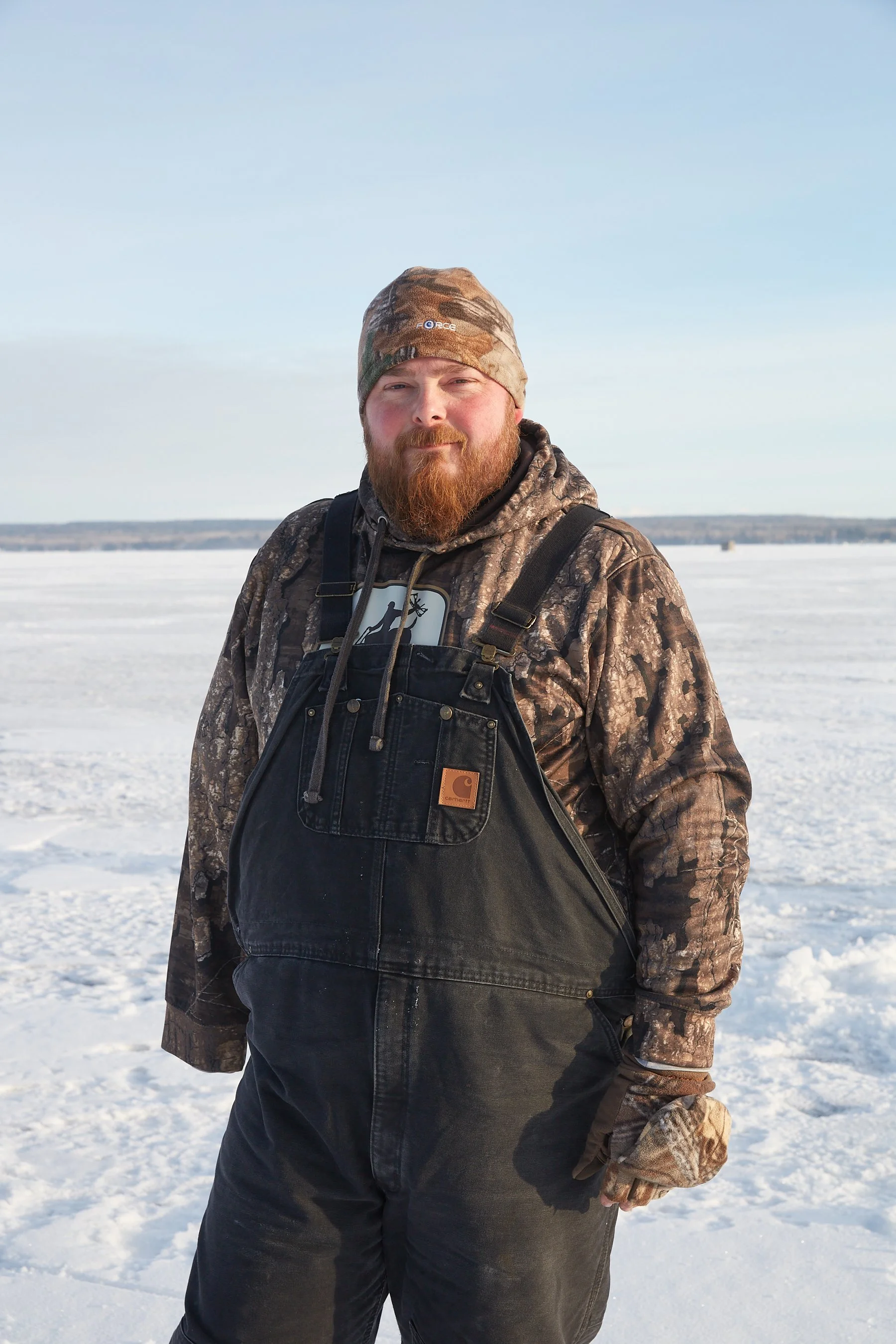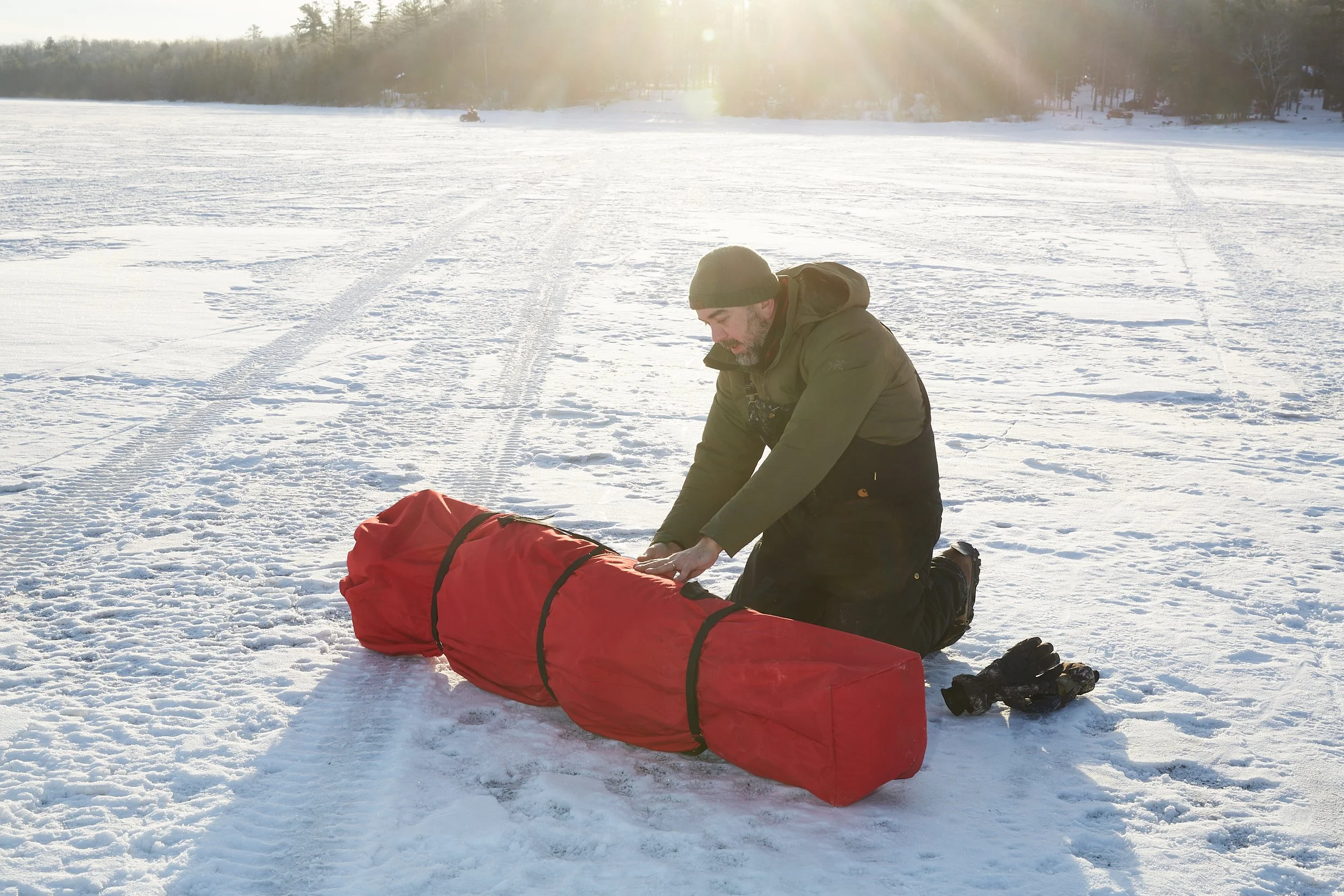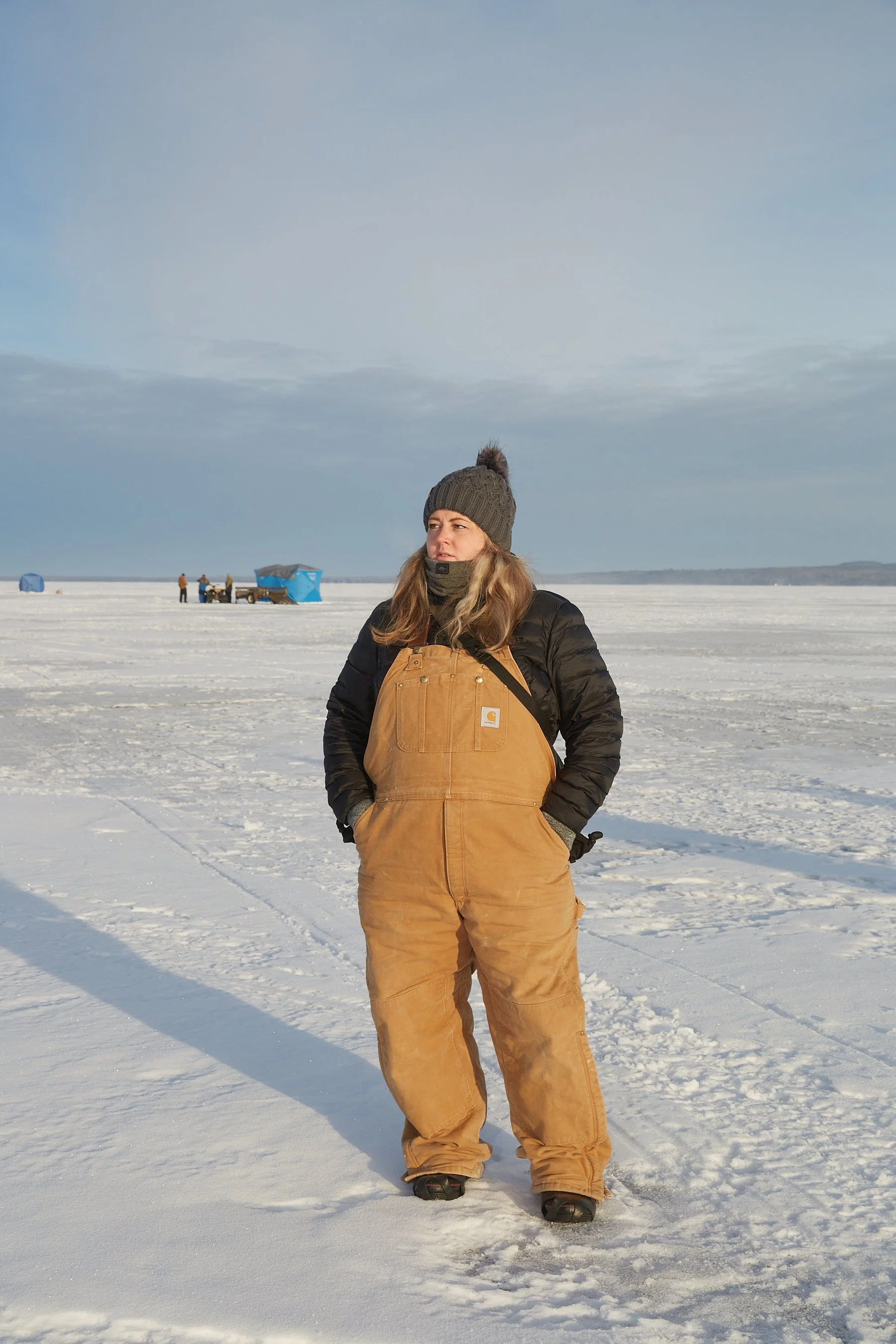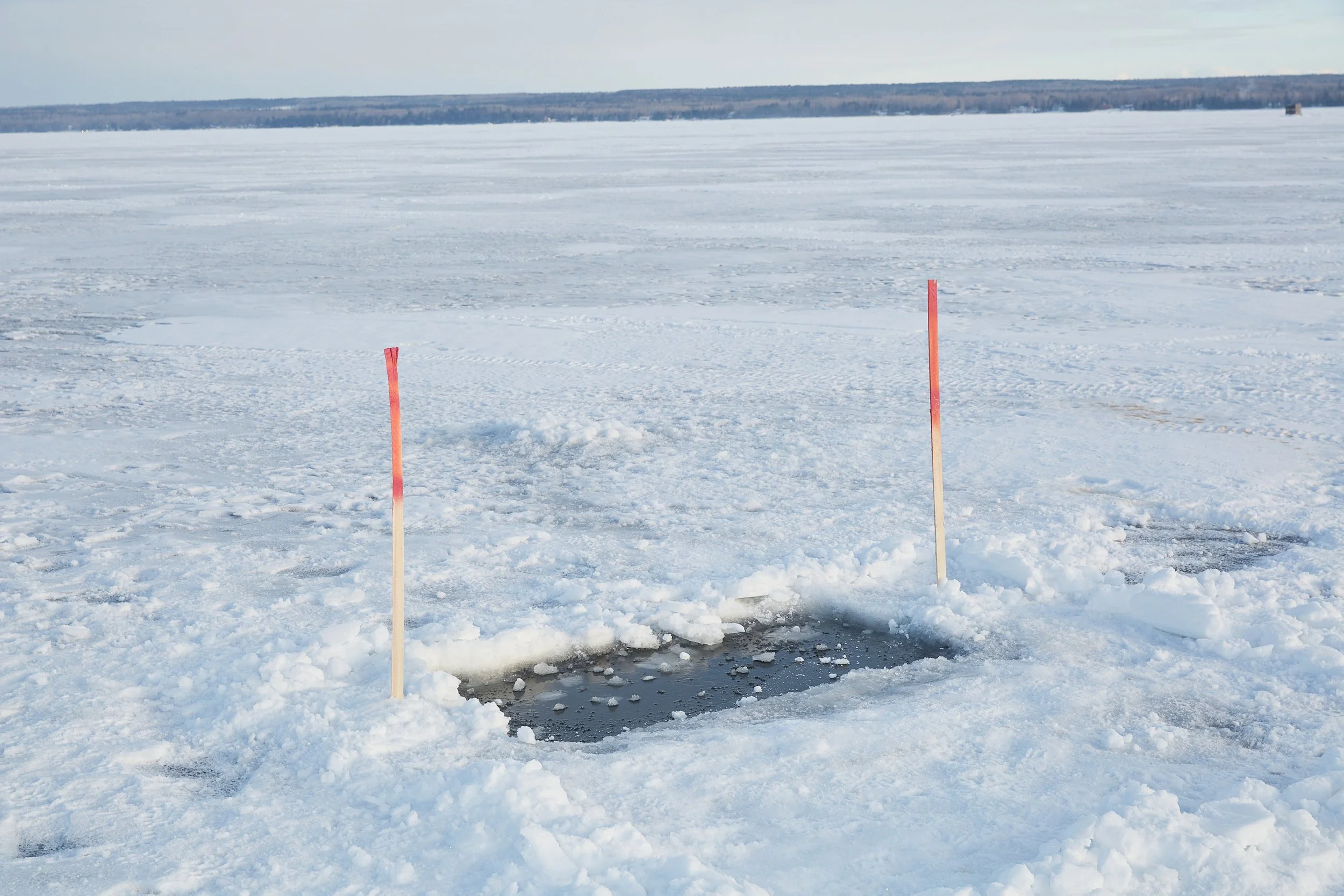Up North II
The digital display on our truck read -6 degrees as we wound our way down South Black River Road. The snow covered parking lot at Onaway State Park crackled as the four wheel drive crunched the icy gravel beneath us. We found one of the few remaining spots near the boat launch and looked out across the lake from the comfort of our heated Tacoma. The sun had just started to peek above the snow capped evergreens along the frozen shores of Black Lake in Northern Michigan. The hum of ATV’s and snowmobiles echoed through the trees, their roars dulled by the soft white carpet blanketing everything in sight. As snowmobiles criss-crossed the surface, ferrying supplies, people, and a few beers to one of the hundreds of ice shanties dotting the lake, I bundled up, slung my camera over my shoulder, and set out for a cluster of ice shanties a few hundred yards from the shore.
The cold air was already freezing my eyelashes but it didn’t bother me, I was too excited. Photographing one of the shortest fishing seasons in North America is an especially unique mix of unpredictable chaos. Of course, most of that chaos is internal - my own mix of emotions about whether I’ll get “the shot.” The lake itself is mostly calm, serene even, aside from the aforementioned snowmobiles darting across the ice. The fishers are inside their shanties, the sky is a soft orange fading to an icy blue. The sun hovers just above the eastern shore. I awkwardly reach my gloved hand inside my pocket and fumble for my phone. In just a few minutes, fishers will receive a mass text message announcing the official start of the 2022 Sturgeon Fishing Season. Just 36 minutes after that, another text message — and an army of volunteers and Michigan Department of Natural Resources staff — would announce sturgeon season is over for the year.
In just over half an hour, the total amount of sturgeon allowed to be caught in Michigan had been reached. That amount? Six. Yes, you read that right, six sturgeon. Not six per fisher. Not six per day. Six total, for the entire year. Despite these dismal odds, and the bone-chilling temperatures, over six hundred ice fishers made the trek to the far Northern tip of the lower peninsula of Michigan for a chance to spear a five foot long fish with a device resembling the love child of a pitchfork and a trident. The previous year, dense snow and cloud cover hampered visibility under the ice, causing the season to last just over two hours. An eternity by Michigan sturgeon fishing standards.
Sturgeon fishing in Michigan dates back thousands of years and was a core part of indigenous diets and culture in the region. Sturgeon, which can live to be 150 years old and can reach lengths of eight feet, were once abundant here. As commercial fishing operations grew, sturgeon were viewed as a nuisance and nearly wiped out. By the mid 1800’s, appetites had changed and sturgeon caviar and meat were a highly sought after delicacy. This culinary trend lead to over harvesting. The midcentury saw pollution and habitat destruction, further decimating the species. By 1994, the sturgeon population was less than one percent of its historical average, leading the state of Michigan to designate them a threatened species. Working with tribal, university, and nonprofit partners, the Michigan Department of Natural Resources began working to rehabilitate the sturgeon population. Strict limits were placed on the number of sturgeon allowed to be harvested. Hatcheries were established to boost the sturgeon population in the few healthy habitats that remained in the state.
Fast-forward to today, the efforts are paying off. It will take time to restore sturgeon to sustainably healthy levels. Female sturgeon don’t reach maturity until they are twenty years old, so efforts to replenish the population have only recently begun bearing fruit. Despite the seemingly insurmountable odds, researchers and conservationists, much like the sturgeon fishers themselves, are optimistic. A multi-state partnership between several state and federal agencies are making a big dent, restocking area lakes with 25,000 sturgeon per year. In the spring, volunteers stand guard along the banks of their spawning grounds to protect against poachers. A giant iron sturgeon sculpture greets residents as the enter downtown Onaway.
Back on the ice, I’m keeping an eye on the DNR staff. When a fisher successfully spears a sturgeon they have to notify DNR immediately. So when you see a couple of snowmobiles with drivers wearing orange vests, there’s a good chance they’re en route to a recent catch. After greeting a few fishers I met while they set up their shanties the previous day, I saw some commotion about a hundred yards away. A man had emerged from his shanty and was waving his arms in excitement. I immediately started jogging towards him - as fast as I was able to while wearing heavy boots and lugging all of my camera gear. My intuition was correct. Five minutes into the season and Scott Ash had just caught one. A few minutes later, a DNR official verified it and gave him instructions for registering the catch. The same DNR official also passed along to me that two other sturgeon had also been caught a little further north. Just ten minutes in and half the number of sturgeon allowed to be harvested was already reached.
Scott loaded his catch and set out for the official DNR station up the road from the lake to register his 48 pounder. With precious little time remaining in the season, I made my way towards another small cluster of shanties. As I made the trek, I saw a DNR official on a snowmobile zoom towards a shanty about one hundred yards away. Is it another catch? I start running towards the shanty but before I get there, the DNR official scoots off to another shanty. I look around and see the same scene repeating itself on another section of the lake. When I approach the shanty and greet the fishers standing outside, they confirm my suspicions. The season was just called. The sixth fish, a 56 inch 35 lb male sturgeon was caught at 8:36 am. And just like that, the 2022 Sturgeon Season came to a close for another year. Across the lake, hundreds of fishers began making plans to return to Black Lake in 2023, as certain as ever that it will be their year to snag one of these magnificent beasts. Some will try a new spot, others will play the odds, sticking to their annual traditions. All of them with the same belief that this will finally be the year the elusive creatures will succumb to their spears and deliver them to Black Lake glory.


